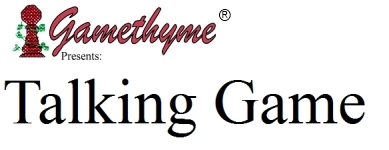As you may or may not know, I received a copy of Amber Diceless Role-Playing for Christmas.
I'd read through it once when it was still in print (when I was much younger than I am now). I'd started looking for it a few years ago, when I picked up Nobilis - I wanted to compare the systems. By then, of course, the price for Amber had skyrocketed, and I was unable to do any sort of comparison, even for myself.
So, now that I have (and have read thoroughly) Amber, what do I think?
Here's the thing you have to keep in mind: Amber kicked off diceless roleplaying. I'm sure there were diceless games before it came out, but none of them were as big as Amber was.
So why did Amber make it so big?
Good question.
Having read the game, I still can't tell you. I can tell you that it's phenomenal on several levels. The game is one where the demand for trust between GM and player is higher than most. This is in large part because - after character generation - players don't necessarily know what their stats are, or how they compare to the other PC's.
This, by the way, is brilliant.
Having players participate in an auction for their attributes is clever - but the brilliant part here is the ability to secretly increase your attributes after the auction.
The game is based on Roger Zelazny's Chronicles of Amber. If you aren't familiar with them, I suggest buying this book and reading them. PC's are the children of Corwin's generation - grandchildren of Oberon.
Obviously, there are probably other siblings and cousins around, but the PC's are the key players.
The mechanics of play themselves are honestly nothing special: Highest number wins. Yes, it's that simple.
The key is to maneuver circumstances to your advantage before comparing numbers. Are you the best wrestler of your generation? Make sure your opponent is unarmed before engaging.
Where this book shines, however, is when it gives advice to the GM. Some of the advice is specific to Amber, but there is a fair amount that can be used in any game. I'd suggest that the majority of the advice is usable in most games.
The book has numerous examples of the various types of conflict players tend to get into, complete with multiple examples, ranging from melee combat when the player is significantly better than their opponent to psychic conflict when weak-willed PC's face stronger NPC's.
It's a fascinating read, and well worth looking for.
You can still, by the way, order a PDF version of the game, and its lone supplement, Shadow Knight.
A lot of fans of Amber disliked Shadow Knight. While I have Shadow Knight, I haven't read it, yet, so I can't comment on whether it's worth the $12. I can tell you that print copies of Shadow Knight are usually available for less than $15, including shipping (I got it for $11 including shipping from Troll and Toad).
And all of this reminds me: I need to write sometime about the importance of GM-player trust and how to use (and abuse) that trust.
Next week, however, I'm planning to talk about Dungeon Twister a bit more - players have been asking me for help with items, and I plan to talk about items and characters and combinations next week (Planned future posts are, of course, subject to sudden change without warning).

I LOVE Amber! And would love to play it again. Here is a list of things that make it great:
ReplyDelete- Players are gods! They can pretty much do what they want to do except when it comes to other god like beings.
- The multiverse is their playground. Anything, *ANYTHING* you can imagine, you can find out in shadow. This allows for amazing creativity.
- The resolution system (comparative stats) encourage planning and creativity, as the numbers only indicate that one party will beat the other in a *fair* contest. Being sneaky, planning ahead, and being creative is needed to win against a stronger opponent.
- Solid, well defined archetypical NPCs already defined from he novels. Same goes with the central setting.
- You are encouraged to scheme, plot and plan, even against other PCs. The politics are great.
- You only need the GM when there is conflict. We used to play with 15 player characters and a single GM. Players would break off into their groups and jump around chatting, scheming, planning, and when needed the GM could pop over and resolve stuff.
- You don't need dice, and only really need minimal info with you (four stats per player) if you know the characters well. This means that you can easily play while hiking, or on a car trip, etc.
- Shadow Knight is disliked by some, but so is the second set of five books that it is based upon. We didn't like all of the mechanics, but it did add further fuel for our creativity.